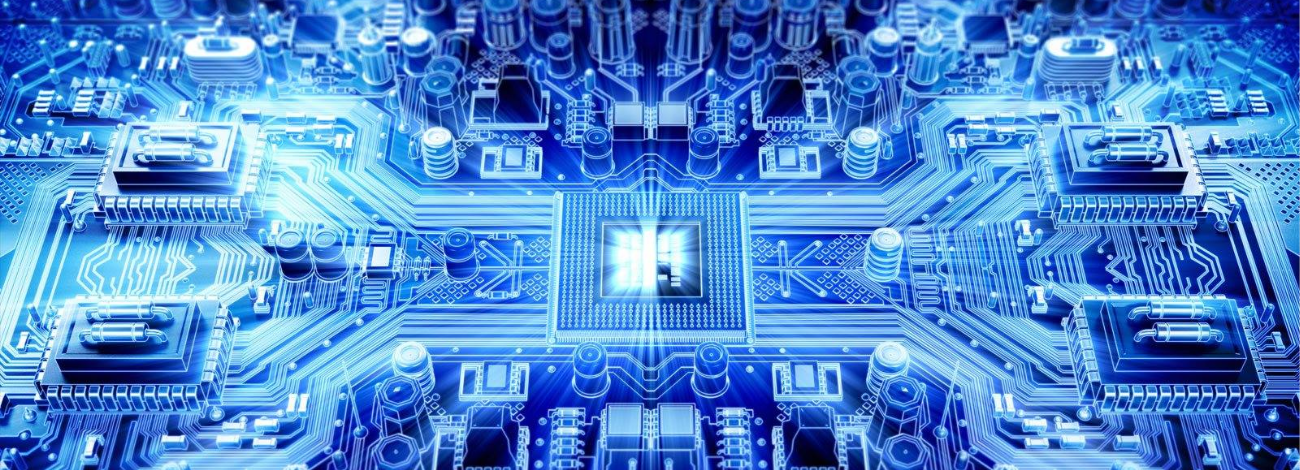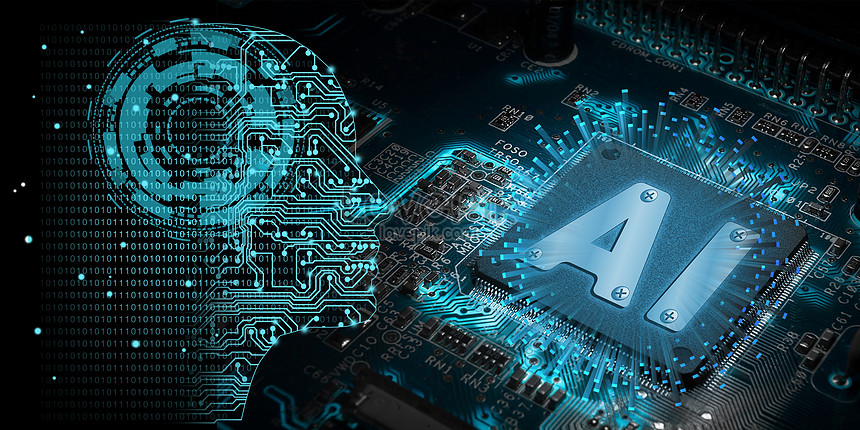Integrated circuit design (IC design) creates circuits, and electronic components integrated on a silicon chip. In particular, the circuit design process is the field of electronic engineering specializing in the design, production, and application of integrated circuits. It is also the foundation for the development of modern technology, allowing the creation of increasingly compact, high-performance, and energy-efficient electronic devices.
Telecommunication
Integrated circuits play an important role in communication systems, helping to transmit data faster and more efficiently. In mobile network systems such as 4G and 5G, microchips are used for signal processing, encoding/decoding, frequency control, and other important functions. It allows for high data transfer speeds and stable connectivity. In addition, integrated circuits also help increase efficiency in cable TV and Internet systems, ensuring the quality and stability of this type of service.
Consumer Electronics
In-home electronic devices such as TVs, refrigerators, and washing machines, microchips help control and manage functions effectively. For example, in TVs, microchips are used to process video and audio signals, control backlight, and manage smart features such as network connectivity or voice control. With refrigerators, integrated circuits help control temperature, control motors, and manage energy-saving features. The use of microchips helps household electronic devices become smarter, more convenient, and more energy efficient.
Medical
Integrated circuits are used in medical devices such as blood pressure monitors, health monitors, and diagnostic imaging equipment to help improve the quality of health care. Specifically, in blood pressure monitors, microchips control and process signals from sensors, ensuring accuracy in measuring and analyzing results in diagnostic imaging equipment such as ultrasound or X-ray, integrated circuits process sensors, and diagnosing pathological images at high quality.
Car
In the automotive industry, microchips are used in control systems to help improve user safety and comfort. In particular, the integrated circuit is used in the engine control system to adjust fuel and ignition timing, assisting the vehicle to operate smoothly without consuming too much fuel. In vehicle safety systems, microchips monitor and control features such as anti-lock brakes, collision warning systems, and airbags.

Main areas of application of Integrated Circuits
Digital integrated circuit
Digital Integrated Circuit (DIC) is an integrated circuit that uses digital components such as logic gates, memory, processors, etc. Key characteristics of DIC include:
– Processes digital information (0s and 1s) instead of analog signals.
– High processing speed, high precision, and reliability.
– Ability to integrate multiple digital functions into one IC.
– Compact size, low power consumption.
Integrated Circuits Similar
Analog Integrated Circuit (AIC) uses similar components, such as amplifiers, filters, converters, etc.
– Handles continuous signals (not 0s and 1s) such as sound, image, temperature, etc.
– The design is more complex than circuits due to the nature of analog signals.
– Applications in communication systems, signal processing, control, etc.
Integrated Circuits Mixture
Mixed-Signal Integrated Circuit (MSIC) combines digital and analog components in the same IC. This allows the integration of digital and analog signal processing functions in a single chip. Key features of MSIC include:
– Combines the advantages of both digital (speed, precision) and analog (continuous signal processing).
– Allows the design of complete electronic systems on a single chip.
– Popular applications in fields such as telecommunications, industry, healthcare, etc.
Common types of Integrated Circuits
Microcontroller
A microcontroller is a type of integrated circuit that contains a processor, memory, and peripherals on a single chip. They are widely used in embedded and control applications, such as consumer electronics, industrial automation systems, and Internet of Things (IoT) applications. The advantages of microcontrollers include:
– Flexibility and customization: Microcontrollers can be programmed to perform specific tasks, allowing developers to customize and optimize their applications.
– Compact size and low energy consumption: The microcontroller is compact and consumes little power, which is suitable for applications that require compact size and energy efficiency.
– Low cost: Microcontrollers are typically low-cost, a great choice for applications with low-cost requirements.

FPGA (Field-Programmable Gate Array)
An FPGA is an integrated circuit that can be programmed and reconfigured by the end user. It provides high customization, allowing developers to design and deploy custom hardware solutions.
– Digital signal processing and image processing: FPGAs can perform fast parallel calculations and digital signal processing is suitable for signal and image processing applications.
– Network and communications: FPGAs are widely used in networking and communications systems, providing flexible and customizable solutions.
– Industrial control: FPGAs in industrial control systems due to their parallel processing and fast response capabilities.
ASIC (Application-Specific Integrated Circuit)
An ASIC is an integrated circuit designed specifically for a specific application with higher performance and energy efficiency.
– Multimedia processing: ASICs are widely used in multimedia applications, such as video encoding/decoding, and audio processing.
– Cryptocurrency and cybersecurity: ASICs are used in encryption and cybersecurity applications, providing optimal performance and security.
– Consumer electronics applications: ASICs in consumer electronics, such as smartphones, and tablets provide specialized features with high performance.
Challenges in the IC design process
Technical Challenge
The size of components on microchips is increasingly shrinking, requiring increasingly higher precision and manufacturing technology. At the same time, the performance of microchips must also be constantly improved to meet the increasing needs of users. It requires engineers to continuously improve manufacturing technology and electronic circuit design. In recent years, technical solutions such as using new materials, optimizing designs, and applying modern manufacturing techniques have partly solved these challenges.
Challenge about Cost
Besides technical issues, cost is an equally important challenge in IC design. Research, development, and production of microchips require a large amount of investment capital. Engineers must develop effective cost management strategies, from choosing the right manufacturing technology to optimizing the production process. Solutions such as using old equipment, reusing components, or outsourcing outsourcing services can significantly reduce project costs.
Challenge about Time
The IC design life cycle is often long, including many complex stages such as research, design, simulation, prototyping, testing, and re-evaluation. To meet project schedule requirements, engineers must find ways to optimize the design and production process within a fixed time frame. From that point, it is necessary to carefully prepare resources and documents before starting the project, use automated design tools, synchronize parallel activities, and ensure close coordination. In addition, applying effective project management methods such as Agile or Scrum can also help shorten design time and increase flexibility in your workflow.
Future trends in IC design
IC design integrating AI Technology
Integrating artificial intelligence (AI) technology into the IC design process is becoming an increasingly popular trend. AI can be applied in stages such as simulation, testing, and design optimization. As a result, design processes will become more automated, helping to shorten product development time and improve IC performance.

AI integration brings many benefits, such as improved accuracy, design optimization, and increased flexibility. However, it also poses challenges, such as ensuring security, privacy, and system reliability. Designers need to address these issues to maximize the potential of AI in the IC technology industry.
IC design IoT
Microchips play a crucial role in Internet of Things (IoT) systems. They are the core components, responsible for data processing, connection, and control functions of IoT devices. The increasingly important role of microchips requires continuous development in size, power, connectivity, and processing capabilities.
In IoT IC design, trends such as multitasking, intelligence, and self-learning will be applied to optimize performance. IoT microchips will become more sophisticated, capable of processing data faster and consuming less power, better meeting the needs of IoT applications.
IC design Nanotechnology
Nanotechnology is opening up many new opportunities for the IC design industry. Nano dimensions and features will help microchips increase performance, processing speed, and storage capacity. It is an important step forward in more compact and efficient electronic devices.
Nanochips will be applied in many fields, such as consumer electronics, medicine, military, and space. They have the potential to offer many advantages, such as high processing speed, low energy consumption, and ultra-small size. However, the production and development of nanochips still face many technological, cost, and safety challenges.
Conclude
Integrated circuit (IC) chip design is the foundation for many modern technologies, from smartphones to IoT, AI, and cloud computing. As new technologies rapidly evolve year after year, this will provide the basis for groundbreaking advancements, creating a profound and positive impact on people’s lives in the digital age.